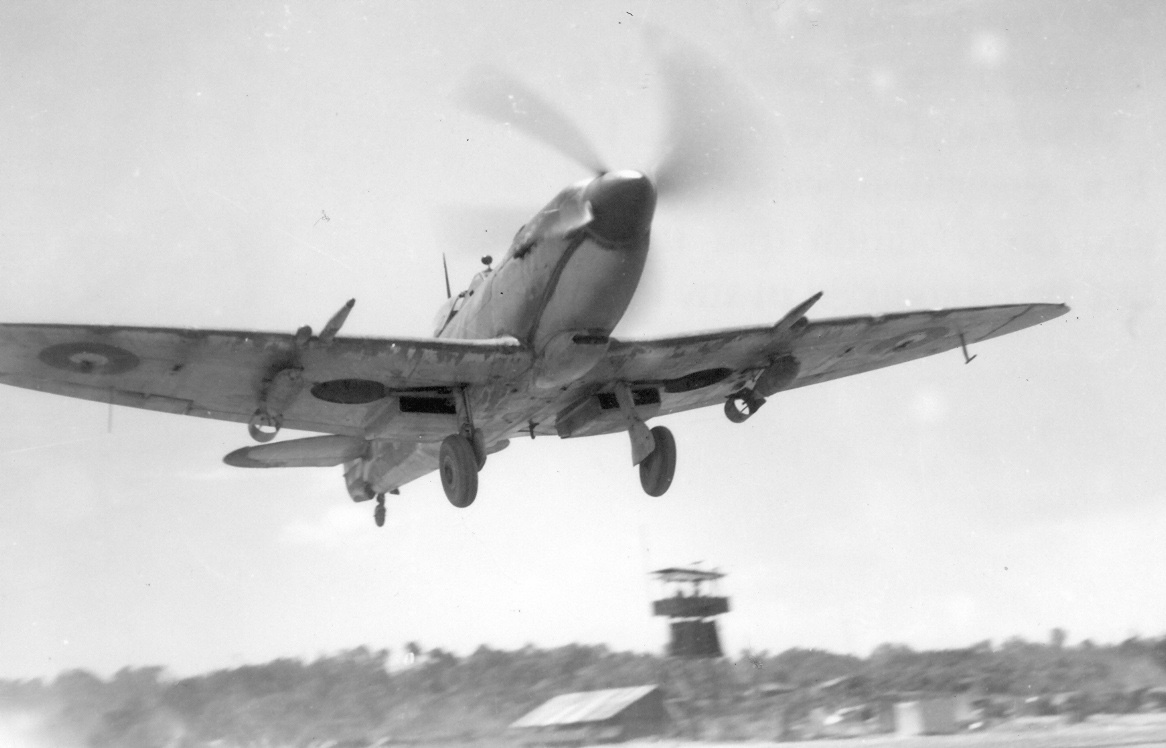
Source: https://www.awm.gov.au/collection/C198195
- Flight Lieutenant Norman James “Jim” Cullen, RAAF
- Spitfire LF.XIII, s/n A58-518 (CR-C & QY-O)
- Spare
- ICM 1/48 Spitfire Mk.VIII as F/L Norman Cullen’s QY-O s/n A58-518
- Gallery
- References and Sources
Flight Lieutenant Norman James “Jim” Cullen, RAAF
On 9th July 1945, twelve Spitfires of No. 452 Squadron RAAF arrived at Tarakan from Morotai, bringing the unit up to full strength. The following day four Spitfires and eight Kittyhawks were assigned to a bombing and strafing attack on Tawao in conjunction with American PT boats. The purpose of the attack was continued interdiction of Japanese forces and misdirection on the location of potential landings in Borneo.
The attack was successful, two bridges were destroyed and several huts were burned in the area. Only one aircraft failed to return, Flight Lieutenant Cullen’s Spitfire LF.VIII of 452 Squadron was missing. He was last seen recovering from a dive-bombing run having successfully released his payload.

Norman James “Jim” was born in 1916 in the Town of Capel in WA, the son of Daniel Patrick Cullen (a School Teacher) and Mary Elizabeth McGibbon. Growing up as one of six brothers he soon showed great promise as a golfer, winning the W.A. amateur championship, the junior championship and the Mt. Yokine Club championship.
When war came Norman joined the RAAF immediately. His brother Doug also joined the RAAF, Dan joined the RAF. Brothers Dern, Don and Ken all joined the AIF.
Norman Cullen spent the first 2 1/2 years of his active service in the Middle East with No.127 Squadron before transfer to the Pacific theatre and service with No.452 Squadron at Darwin, Morotai and at Tarakan. He was promoted Flight Lieutenant upon his arrival with 452 Squadron in February 1945.
Spitfire LF.XIII, s/n A58-518 (CR-C & QY-O)

Spitfire LF.VIII was built in early 1944 as MT518 at Eastleigh and left the factory painted in the standard RAF Day Fighter Scheme of Dark Green / Ocean Grey / Medium Sea Grey. Soon thereafter it was disassembled and put on a boat for Australia. Upon arrival, it went through three sets of hands before issue to No.452 Squadron.
- 9/7/44. Rec’d No. 1 AD. Erected there.
- 6/9/44. Rec’d No. 14 Aircraft Repair Depot Replacement Pool.
- 20/10/44. Rec’d No. 9 RSU. Here she was re-camouflaged in the RAAF colours of Foliage Green over Sky Blue. The over-painting in RAAF colours was done free-hand, by spray painting. Hence, the demarcation between the upper and lower colours was not sharp, or straight, as there was no masking and, there was overspray between the two colours.
- 10/12/44. Received by No 452 Sqn and held as back up for Group Captain Caldwell and given his markings of CR-C.
Several pilots logged time in A58-518 while it was Caldwell’s backup. During this time it was flown by several pilots, among them F/O J. A. Pretty as pictured in the photo above and below. On Christmas Eve 1945 F/O Jack Pretty scored a kill on Christmas in A58-618.

Source AWM: https://www.awm.gov.au/collection/OG1971
When G/C Caldwell left No.80 Wing in April 1945 his backup A58-518 was absorbed back into No. 452 Sqn and re-coded QY-O. Initially it was regularly flown by ‘B’ Flight commander, F/L Freckleton, then F/L Cormack, and by quite a number of other pilots including F/L Colyer in addition to F/L Cullen.
Spare
Norman Cullen was one of six brothers, all of whom saw service in the Second World War. Born and raised in a small town in Western Australia they were almost as far removed from the war as it was possible to be. Even so, the brothers all served.
Norman’s brother, Doug, also a pilot in the RAAF was killed in an air accident off Rottnest (near Perth, WA) on January 6, 1944; Dern served as a captain in the A.I.F.; Don, also a member of the A.I.F., was made prisoner of war in Crete; Dan served with the R.A.F. in Europe and was awarded the Distinguished Flying Cross; and Ken, who served with the A.I.F., also in the Middle East. Two killed out of six.
A58-518 was Caldwell’s spare Spitfire, used frequently nonetheless, though by other pilots. By the latter stages of the war Spitfires as well as almost all the materiel required to win it was available to surplus. Long gone were the days of 1940 where Spitfires rolled out the factory in Eastleigh directly to the front line – assuming there was a pilot to fly it, that is.
The attack on Tawao had a legitimate war aim; there, an active enemy based some of its assets which posed a risk to Allied objectives. But this was a very local risk, and very locally contained. Further north great battles were still raging, battles which would ultimately – partially – decide the “result” of the war in the Pacific. These were battles which relegated the attack on Tawao to irrelevance, except to Norman James Cullen that is.
In the last few months of the war the Allies had more of everything they needed to win it. Including men.
ICM 1/48 Spitfire Mk.VIII as F/L Norman Cullen’s QY-O s/n A58-518


This is fourth 1/48 ICM Spitfire to feature on the site so I will refer you to comments on the kits made in several previous builds on Making-History such as in the Mk.VII, PR.X and Mk.IX articles.
This was my first build of the Mk.VIII boxing though, and while there are some differences in the parts used over other versions, I found it to be essentially the same as previous builds. My version was of good quality, even some of the notorious sink marks on the wings and fuselage weren’t present and only minimal clean up was required; I was even able to use the wheels which is truly remarkable. I did not use any aftermarket on this except some generic 3D decals for the pilot’s harness.
Build
The photos describe the build as well as any prose might do. There was one notable faux pas that required correcting however. In my haste I attached the incorrect carb intake, and replacement with the correct one required a little surgery. I cut and adapted the correct part and spliced it onto the incorrect part.
The only other correction I made was to the pilot’s headrest. The photos below show it present, I learned that it was not in fact present in these aircraft so I removed it.
Click on any of the images below to scroll through the gallery.










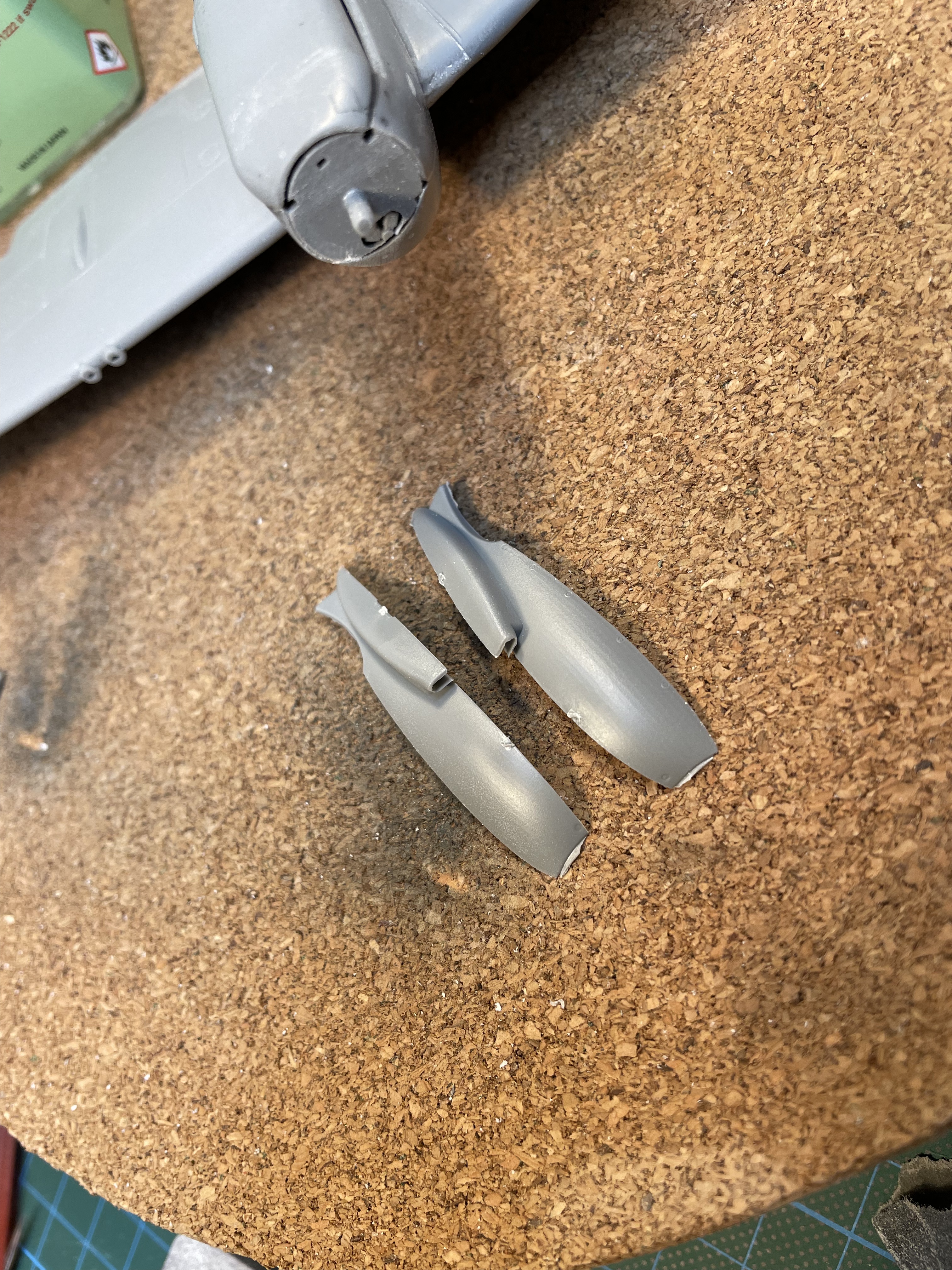




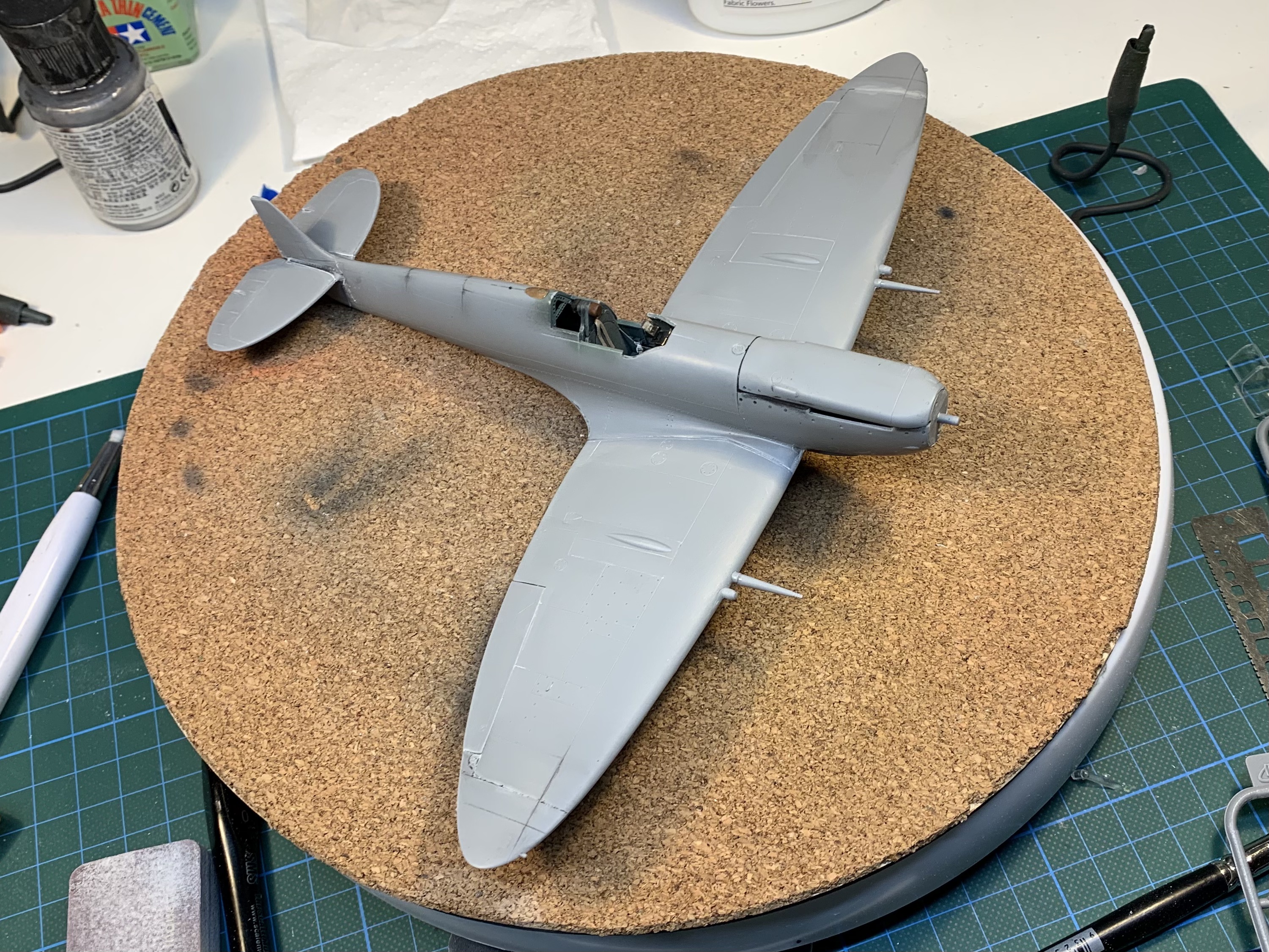


Aside from my self-inflicted challenges, this ICM Spitfire built as simply as the others. Without much ado, it was time to paint.
Paint
My original plan was for a green/brown camouflaged airframe with white theatre markings. I somehow ended up with a green airframe with no markings; I wanted to tell Cullen’s story. It turned out though, his aircraft was a little unusual and its story worth telling.
A58-518 was issued to 452 Sqn RAAF in December 1944 and had by then been repainted in RAAF Foliage Green over RAAF Light Blue while No. 9 RSU in October. As it was designated Wg/Cdr Caldwell’s spare aircraft it was coded CR-C.


The photos above were taken while A58-518 was Caldwell’s spare. Note the codes and white theatre markings, as well as the white spinner. Close examination of the tail in the righthand photo shows the demarcation between green and blue to be soft and wavy as would be expected if painted freehand.
The photo below was taken in July 1945 and is believed to be of A58-518. By this time, after Caldwell had left the Squadron, it had had the white markings overpainted.

The base scheme, then, was a simple one of RAAF Foliage Green over RAAF Sky Blue. I wanted to represent the repaint with a soft edge between. I also represented the overpainted white theatre markings by painting the leading edges with a slightly different shade of Foliage Green.
After a basic pre-shade I applied the Sky Blue first and then added some texture in the usual manner. When that was dry, I mixed up applied the Foliage Green using blutack for the mask. I also used it for the leading edges.
Note that between taking the first image and the last of the gallery below, I realised that the fuel tank needed to be removed, along with the bomb rack mounts (more detail on the latter follows below).
Click on any of the images below to scroll through the gallery.






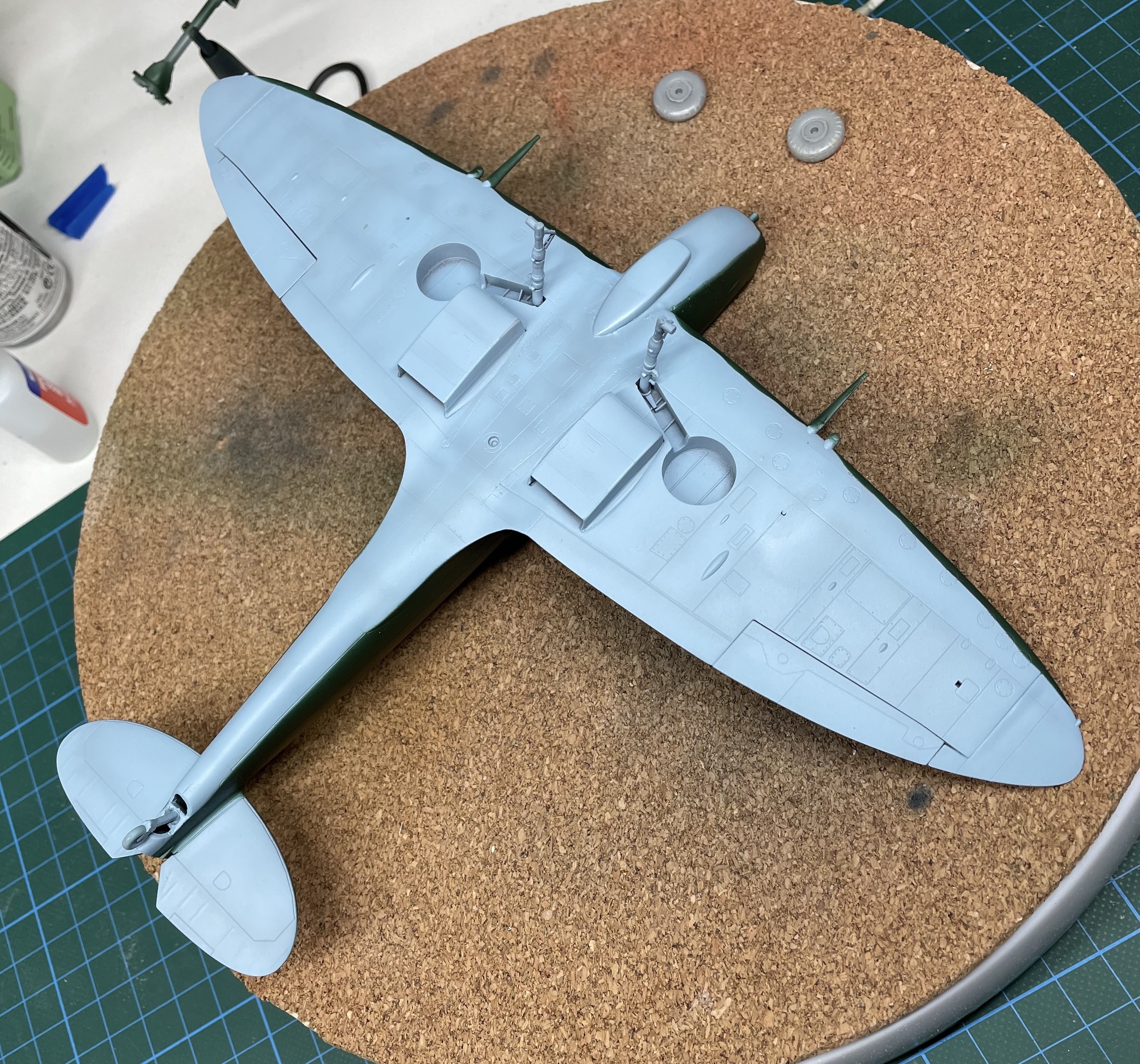
Markings
At the time I started this build I hadn’t decided on the airframe I was going to make. Once I’d settled on A58-518 I still didn’t know how it was marked once it ceased to be CR-C. Here’ I was aided by Peter M. on the Britmodeller Forum who let me know that it was coded QY-O.
I designed and cut masks for the markings on my Silhouette cutter and applied paint. As the Australians never bothered to replace the factory-applied stencils when they repainted their Spitfires I didn’t need to apply any of the stencil decals, the only markings required were the insignia and codes.
In order to replicated the stencil application of the code letters, I opted to use thin strips of tape to mask in conjunction with the masks I ad made. It was simpler this way, rather than having to create the specific stencil shapes in the design software.
Click on any of the images below to scroll through the gallery.





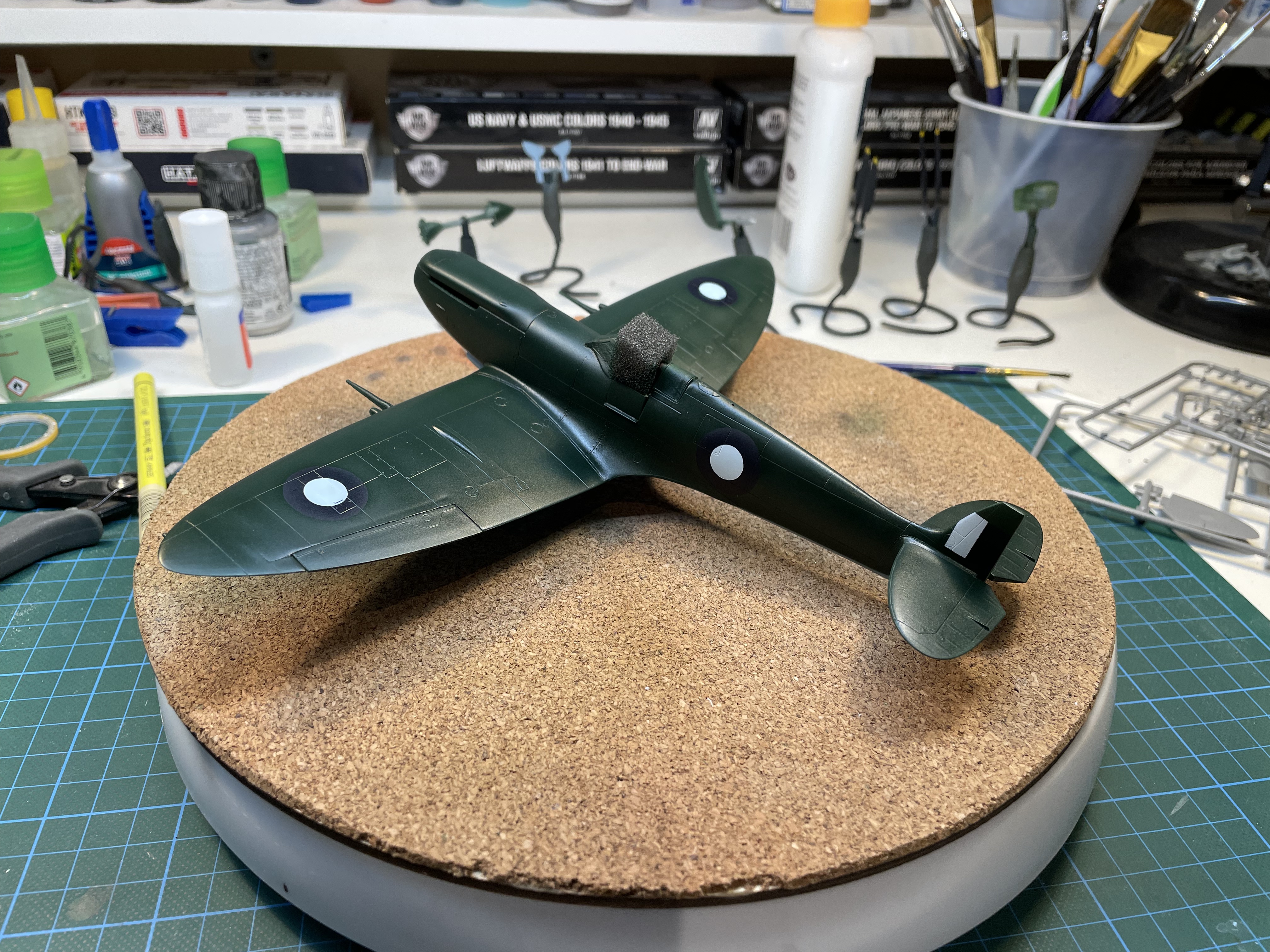
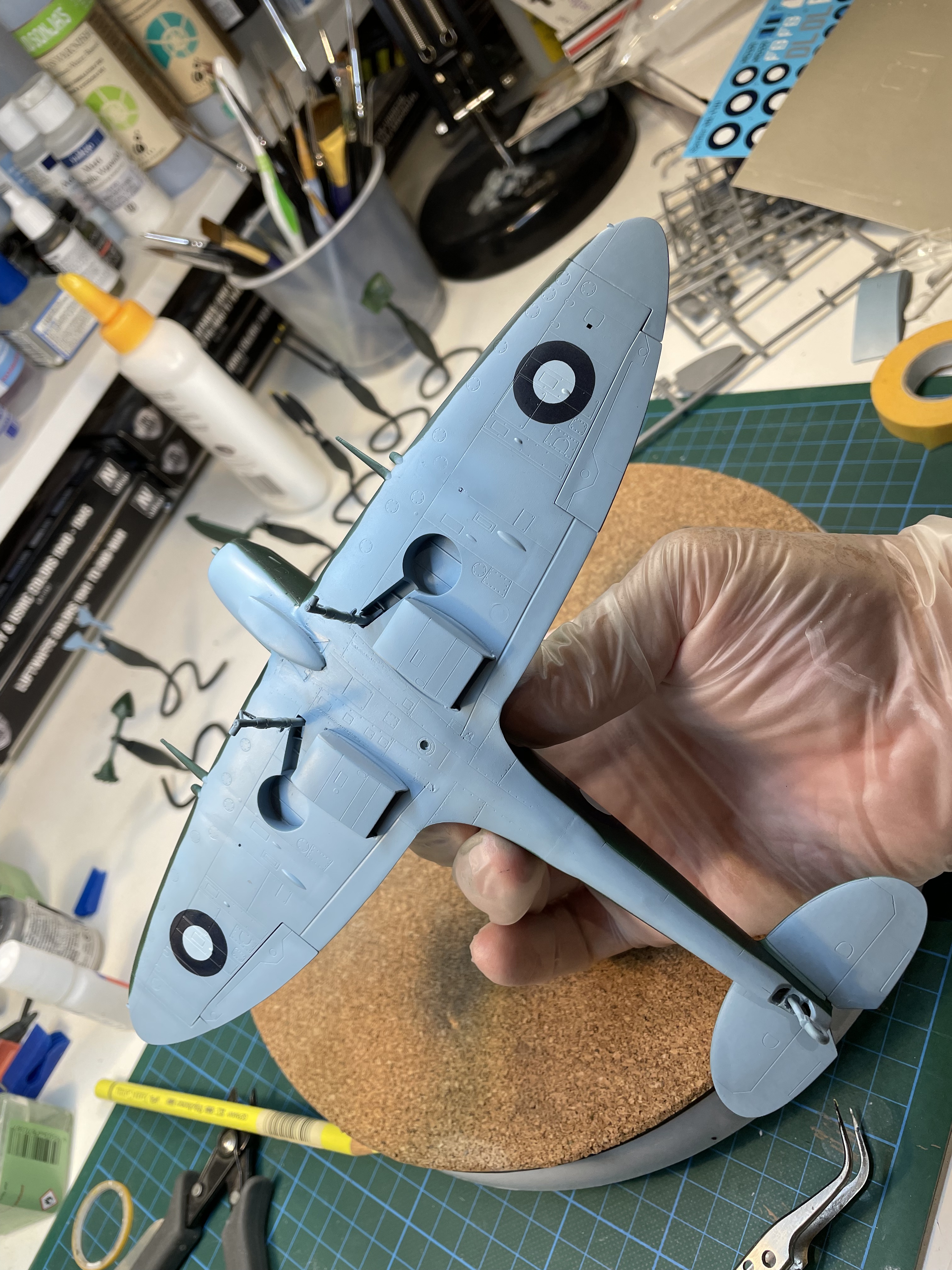


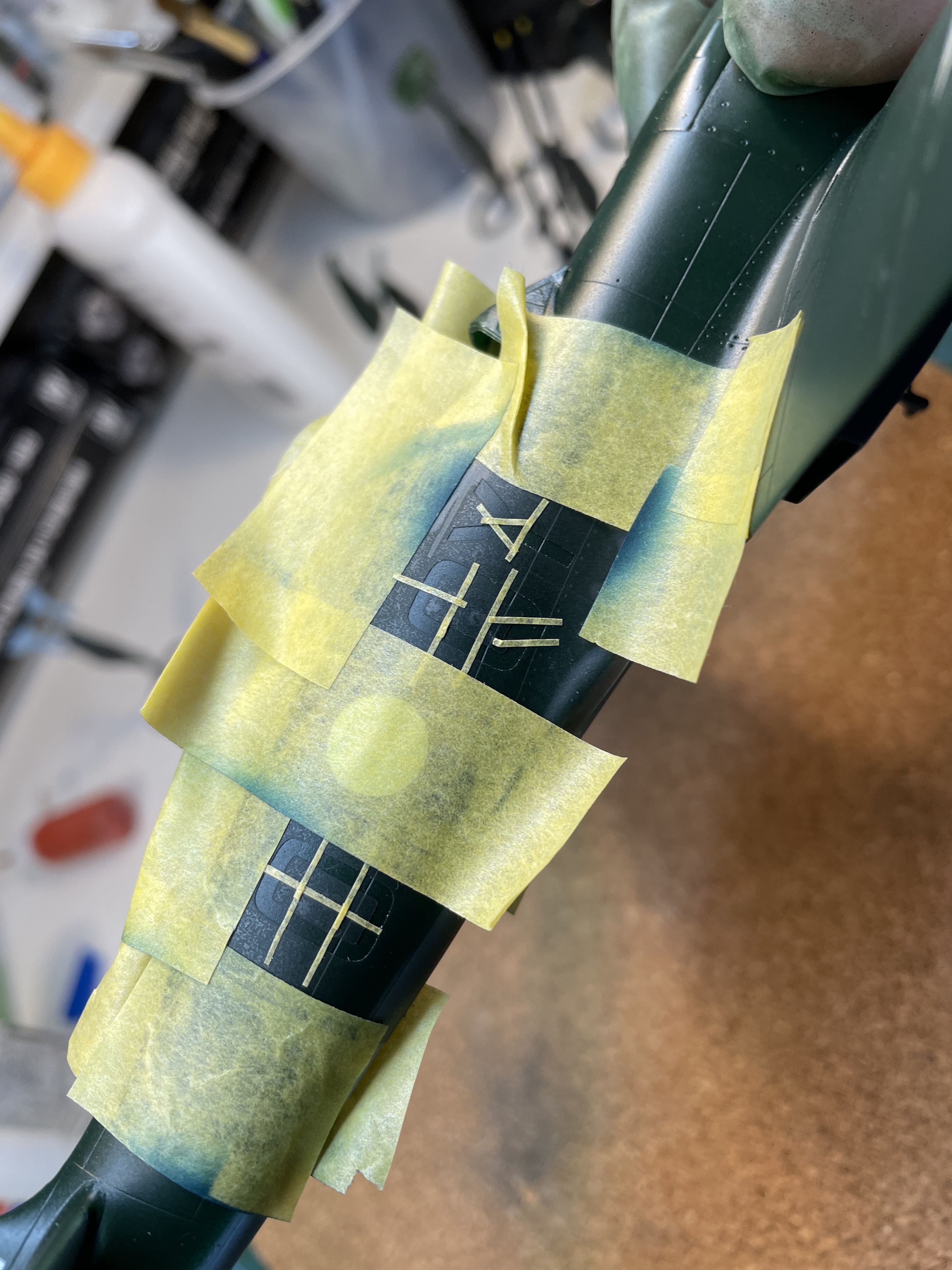



With the markings complete I was able to move on to the final stages of the build.
Weathering
The photo below opened up the possibility to create this model in exactly the image of Cullen’s Spitfire. It is extraordinary to think that the photo below is of Cullen departing on that fateful sortie on July 10.

Looking at the photo from strictly and observational sense, a few things become apparent that affected the way I would finish the model. Firstly, it appears the bombs are different colours. At this late stage in the war bombs were typically green, however they started as yellow. It appears to me at least that the bomb on the Starbard wing is a lighter colour than that on the port wing. At least one way I could interpret that is the starboard bomb being yellow.
Overall, the airframe appears to be quite clean. There is of course some general grime as would be expected operating from a forward base. There appears to be gun smoke stain on the outboard machine gun ports and general griminess associated with airframe maintenance. It’s interesting that despite the Merlin engine’s notorious capacity to leak oil, there is very little if any oil staining on the lower fuselage.
To me, though, the most interesting aspect is the marking on the wing leading edge. Take a look at the close up below.

Bearing in mind that the airframe originally had white leading edges which were over painted with foliage green, it seems to me that there is a remnant of the white under the wrapped green visible below. Furthermore, that white also appears to have flaked exposing the original RAF medium sea green paint with which the aircraft was originally delivered.

Finally standard weathering was also required, such as the exhaust stains and the general grime. The photo above shows how the exhaust stain could build up quite substantially, but on Cullen’s airframe it appears that it wasn’t so obvious.
Click on any of the images below to scroll through the gallery.

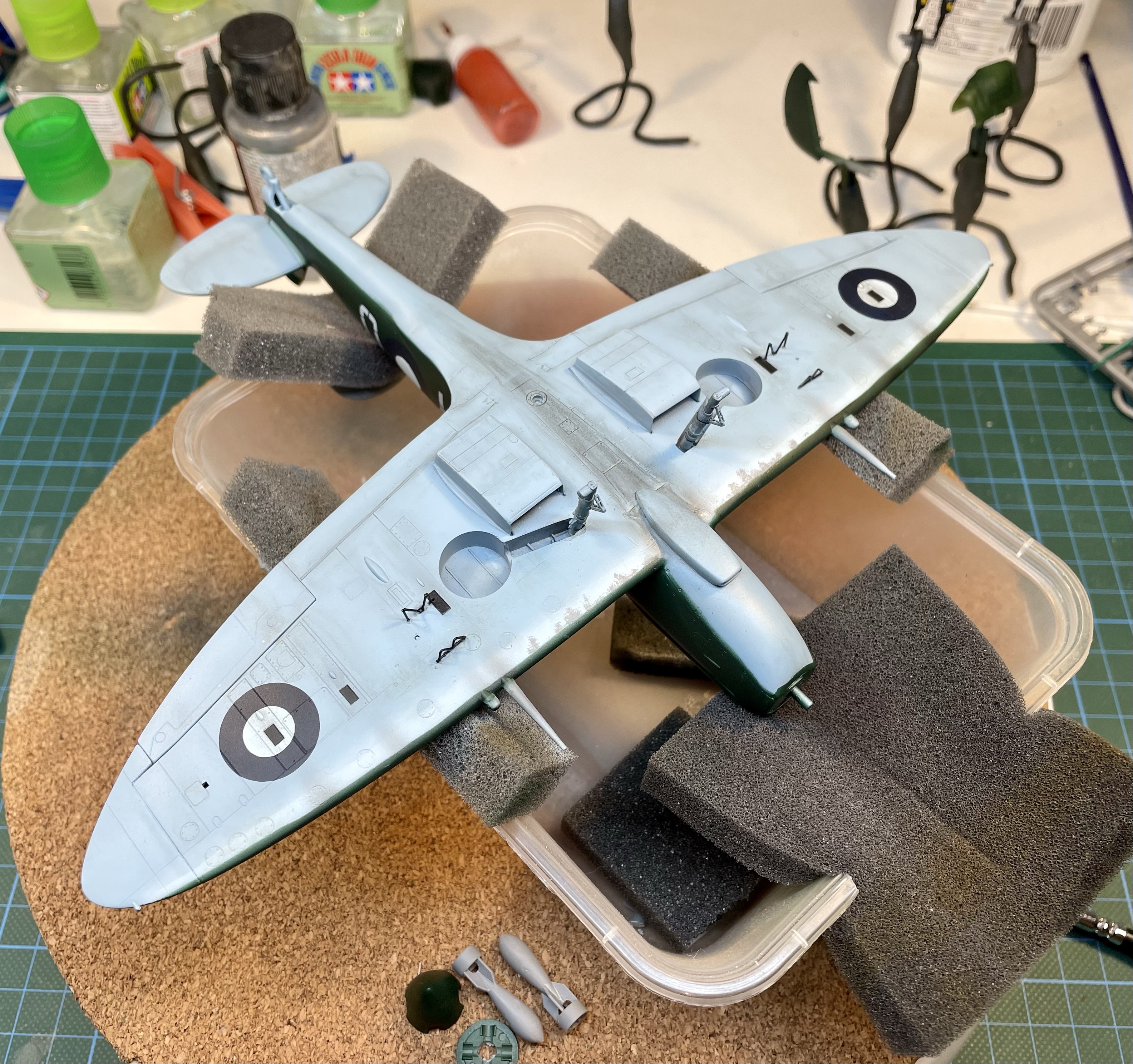



Finish
The most difficult task remaining after I’d added, the undercarriage and other bits and pieces were the bomb racks. The RAAF had a different design than that used by the RAF, and it consisted of two heavy wire frames to steady the bombs with the release mechanism internal to the wing. Such was the design that it covered the canon spent shell chute and the bombs had to be released before the cannons could be fired.
I fabricated the frames from wire, painted them and attached them to the wing. That simple sentence doesn’t do justice to the amount of attempts it took to get two sets acceptable to me. Photo of the bomb rack design can be seen in the gallery below.
Click on any of the images below to scroll through the gallery.



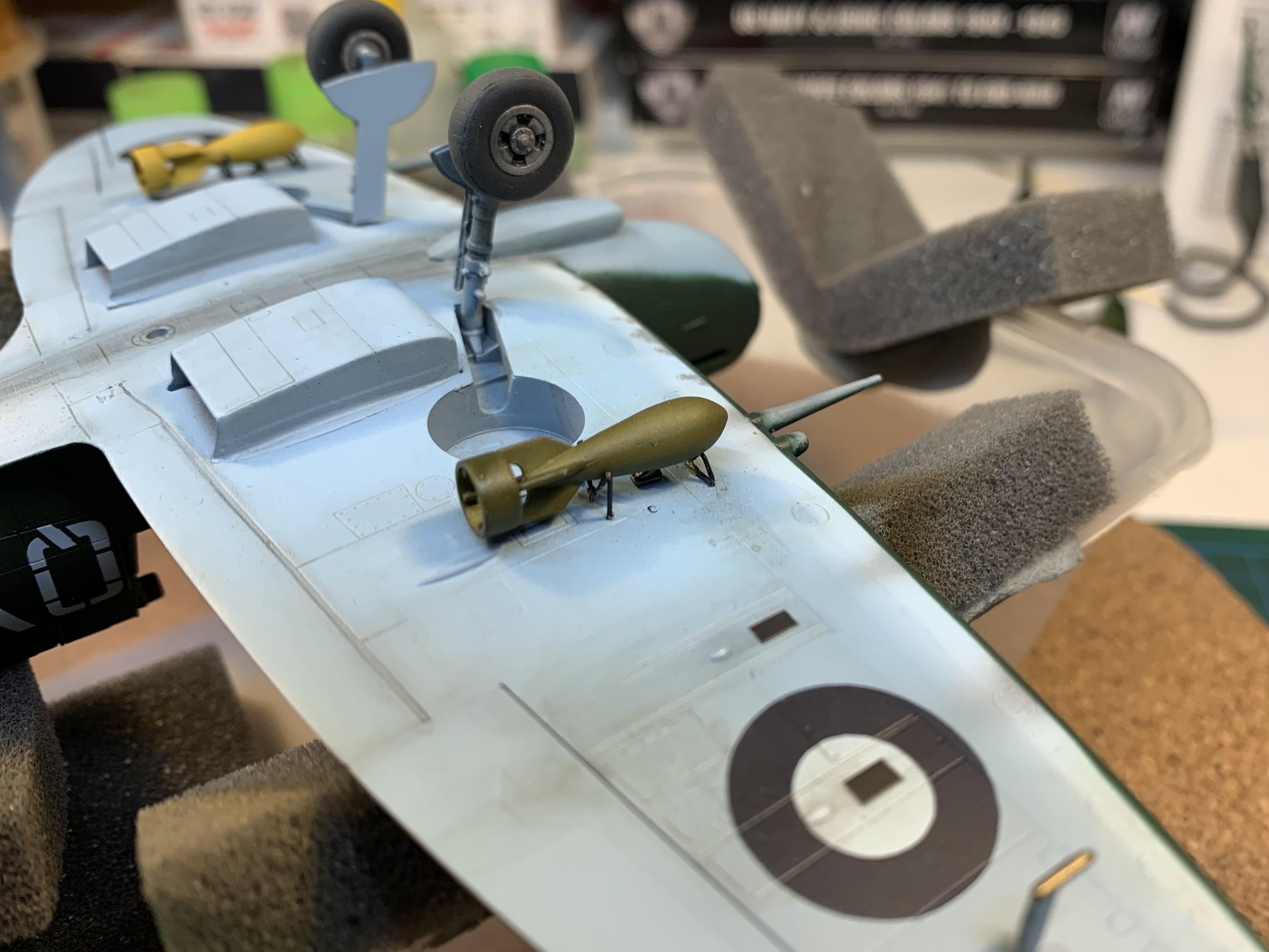
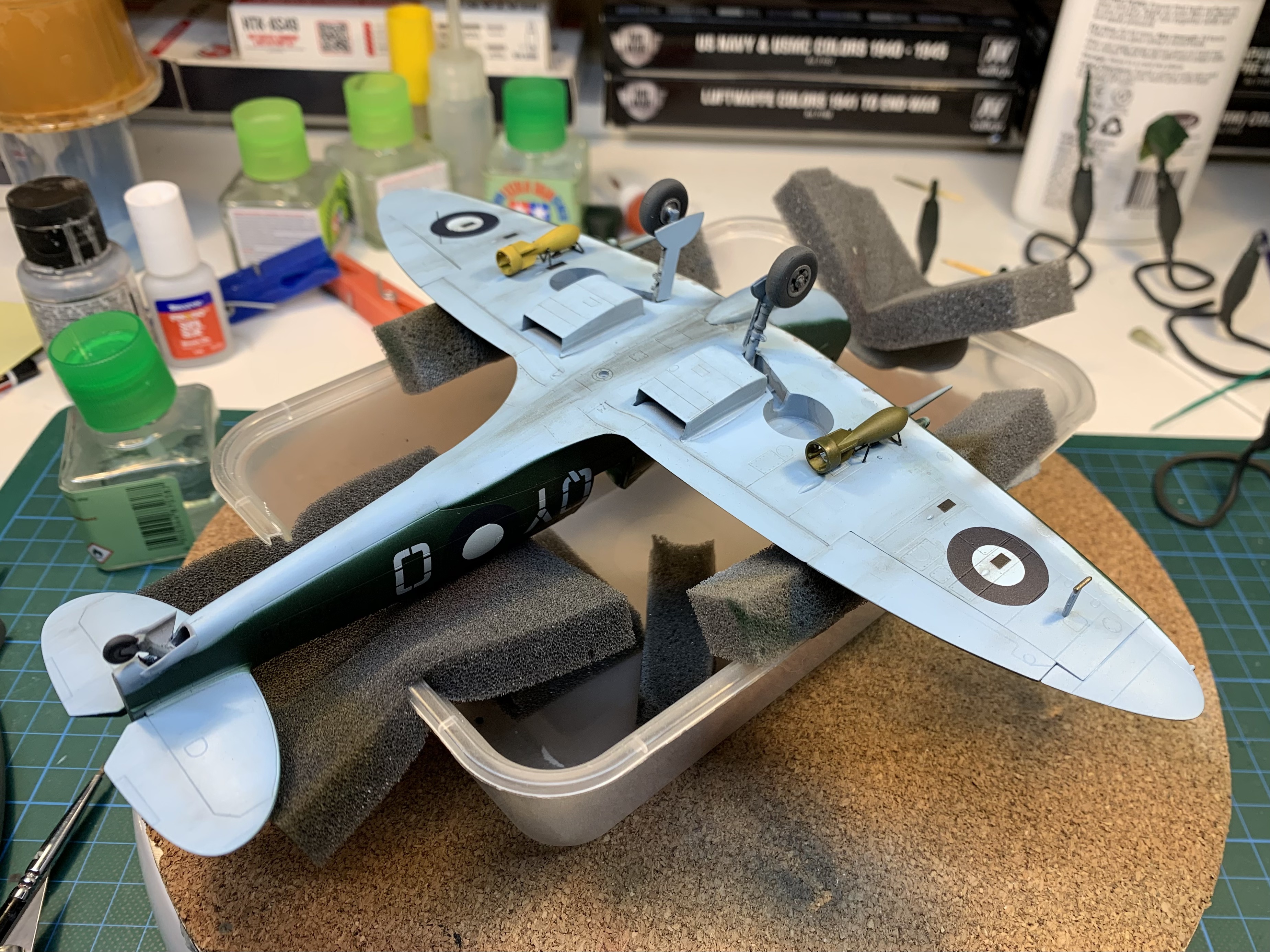




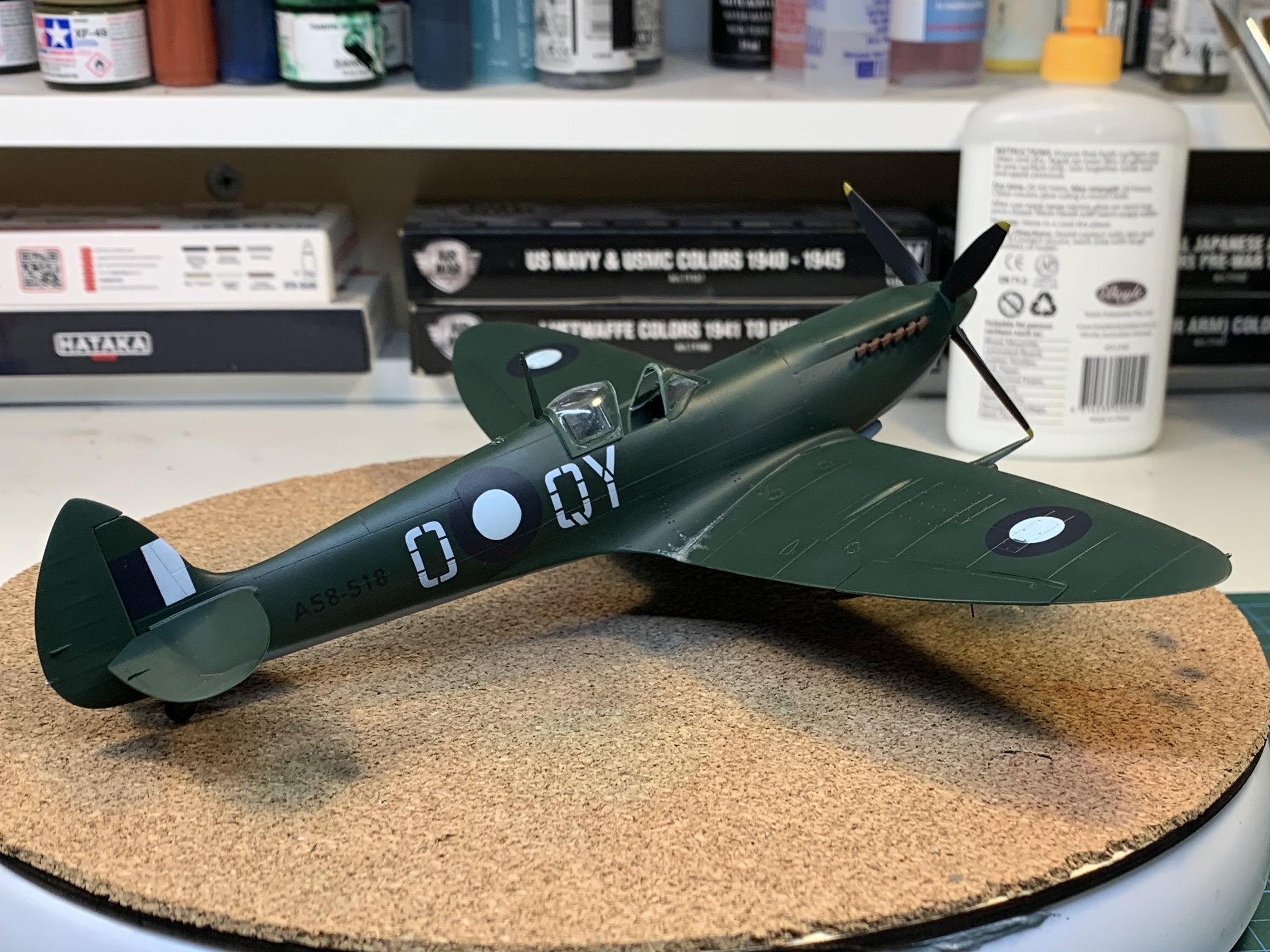
So, another ICM spitfire completed. As I have said elsewhere, the kit isn’t perfect, but I like it now that I understand how to put one together. It’s such a versatile kit; I’ve built out of the box and heavily modified and its flexibility is a distinct advantage in achieving the result I’ve aimed at. There are more Australian Spitfires to build; I started this project with an aim to build one with white theatre markings and camouflage paint job. I ended up with a green one this time, the next one will be different.
Gallery

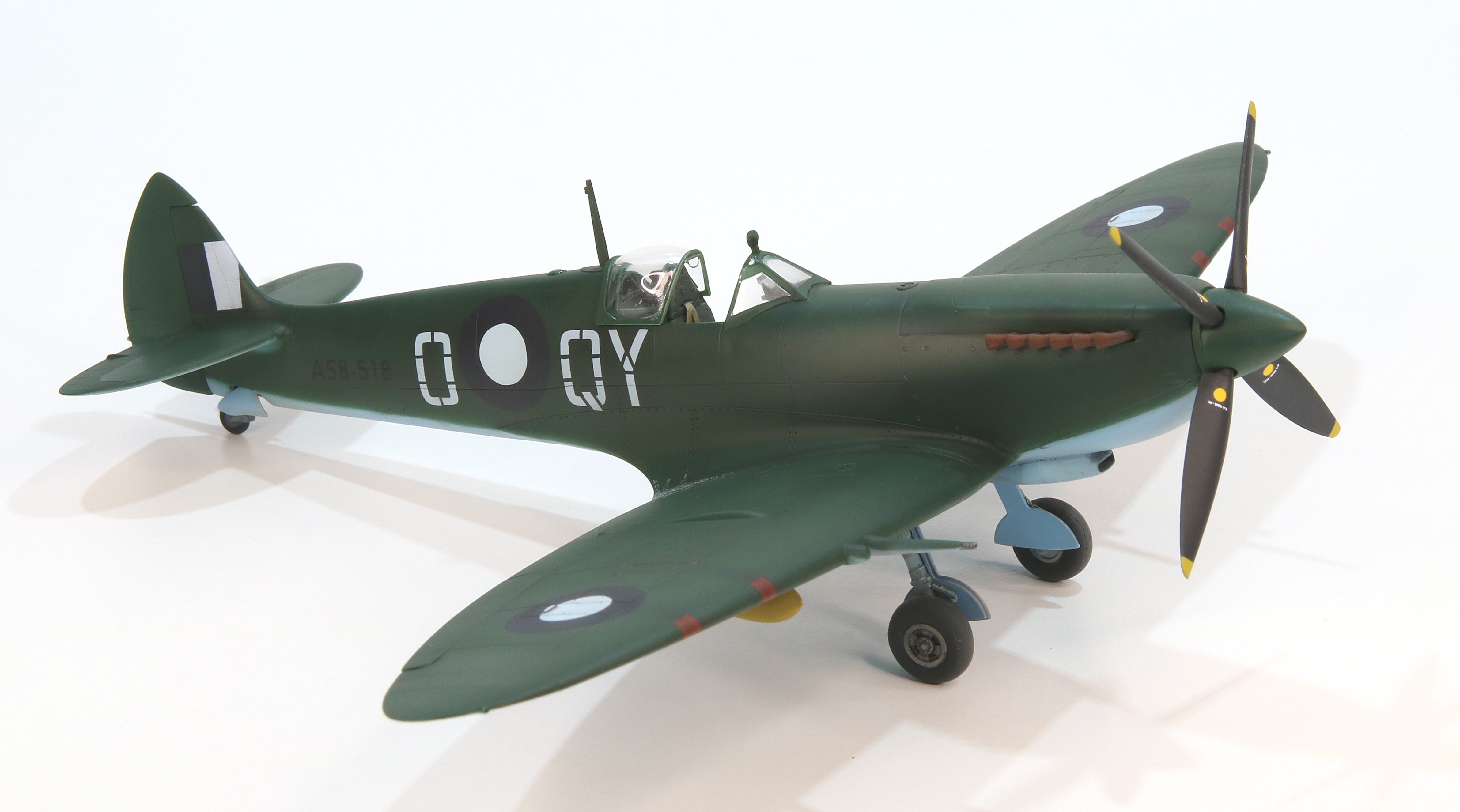







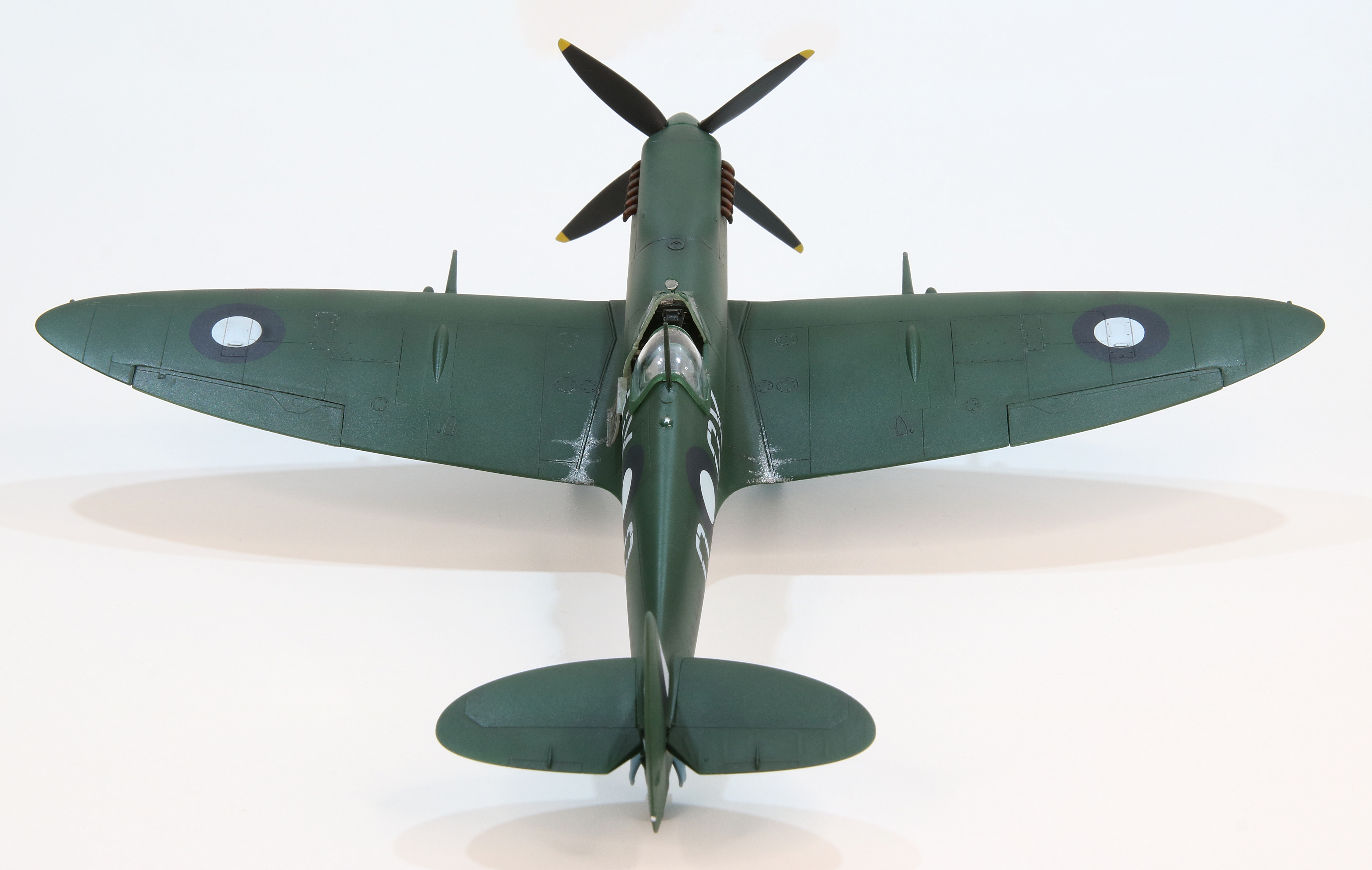
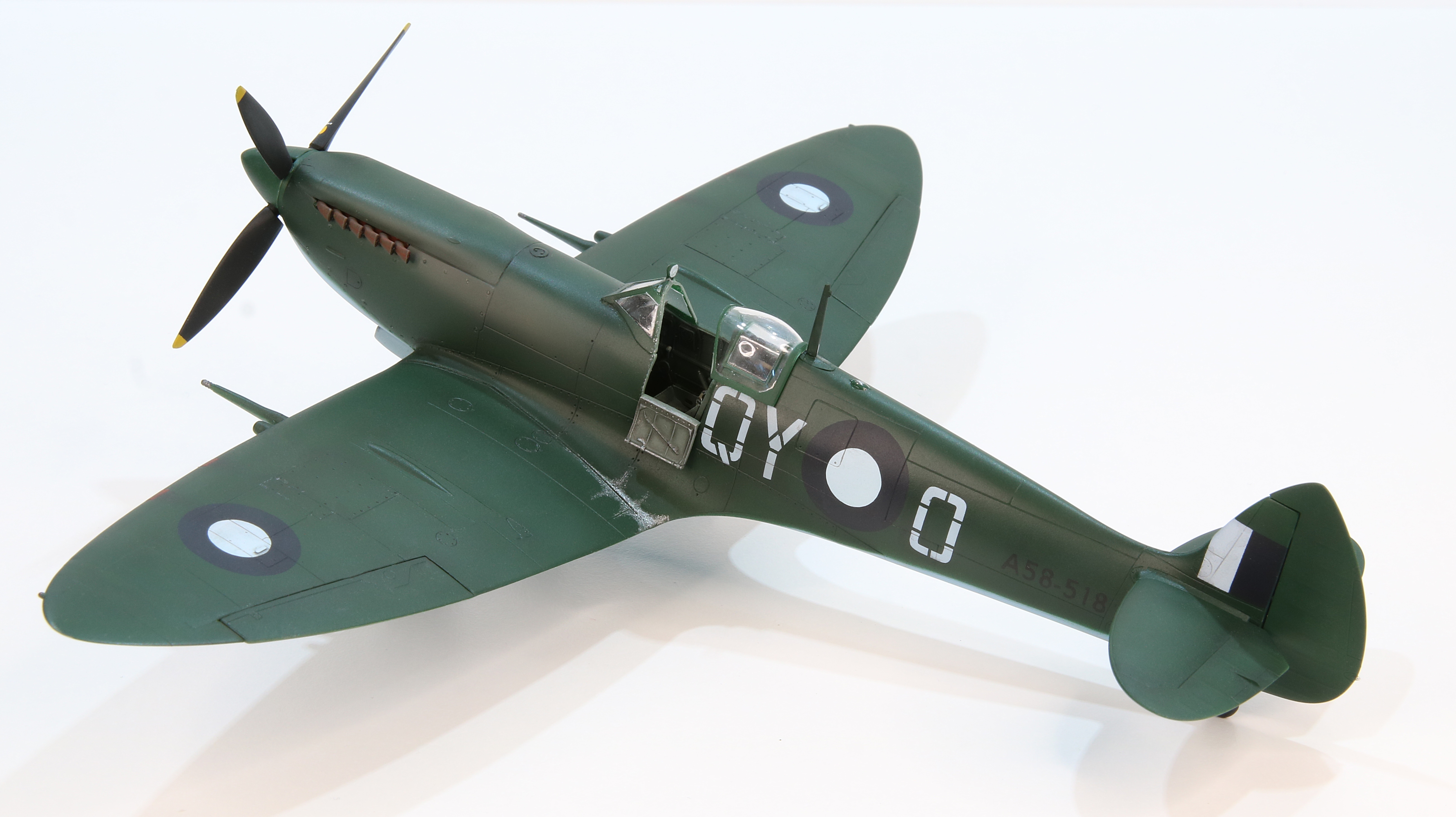
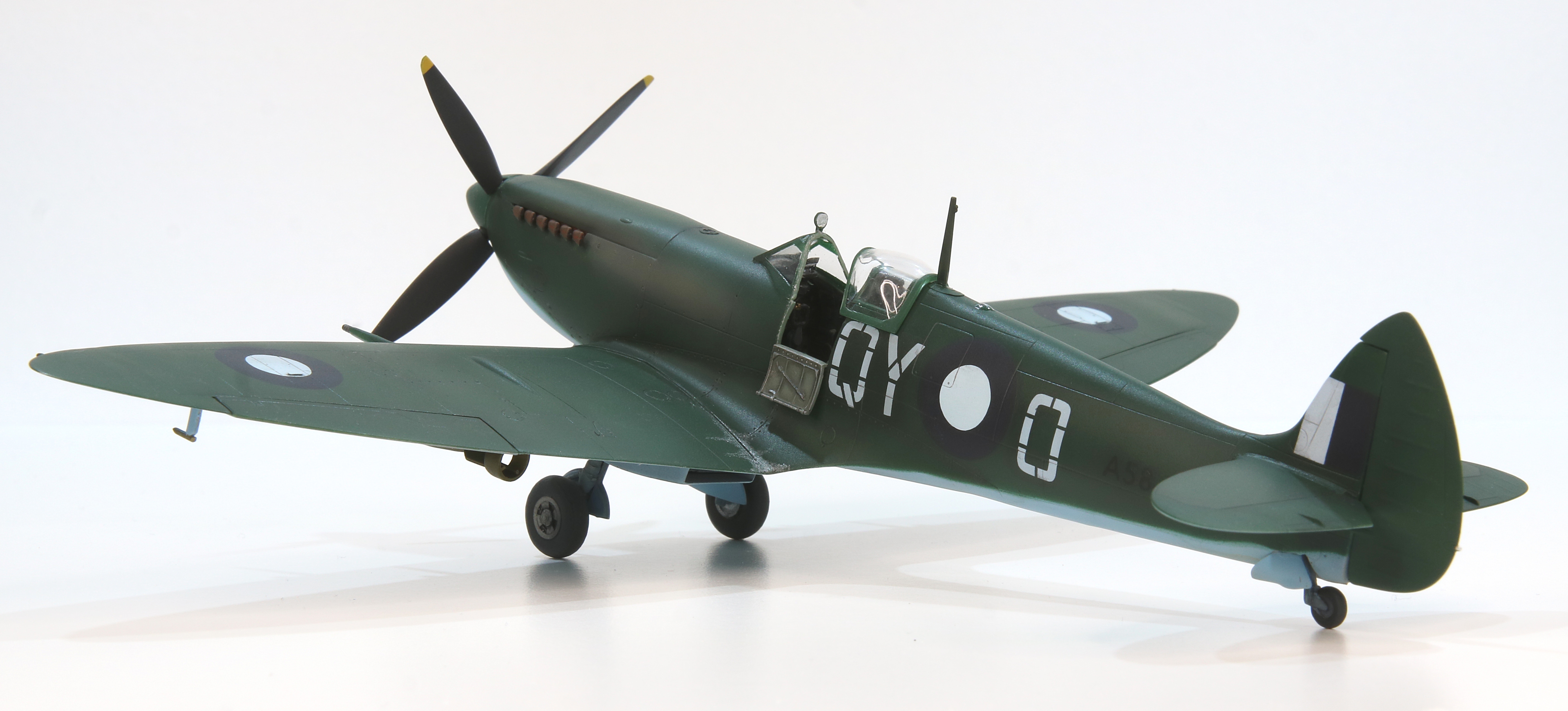


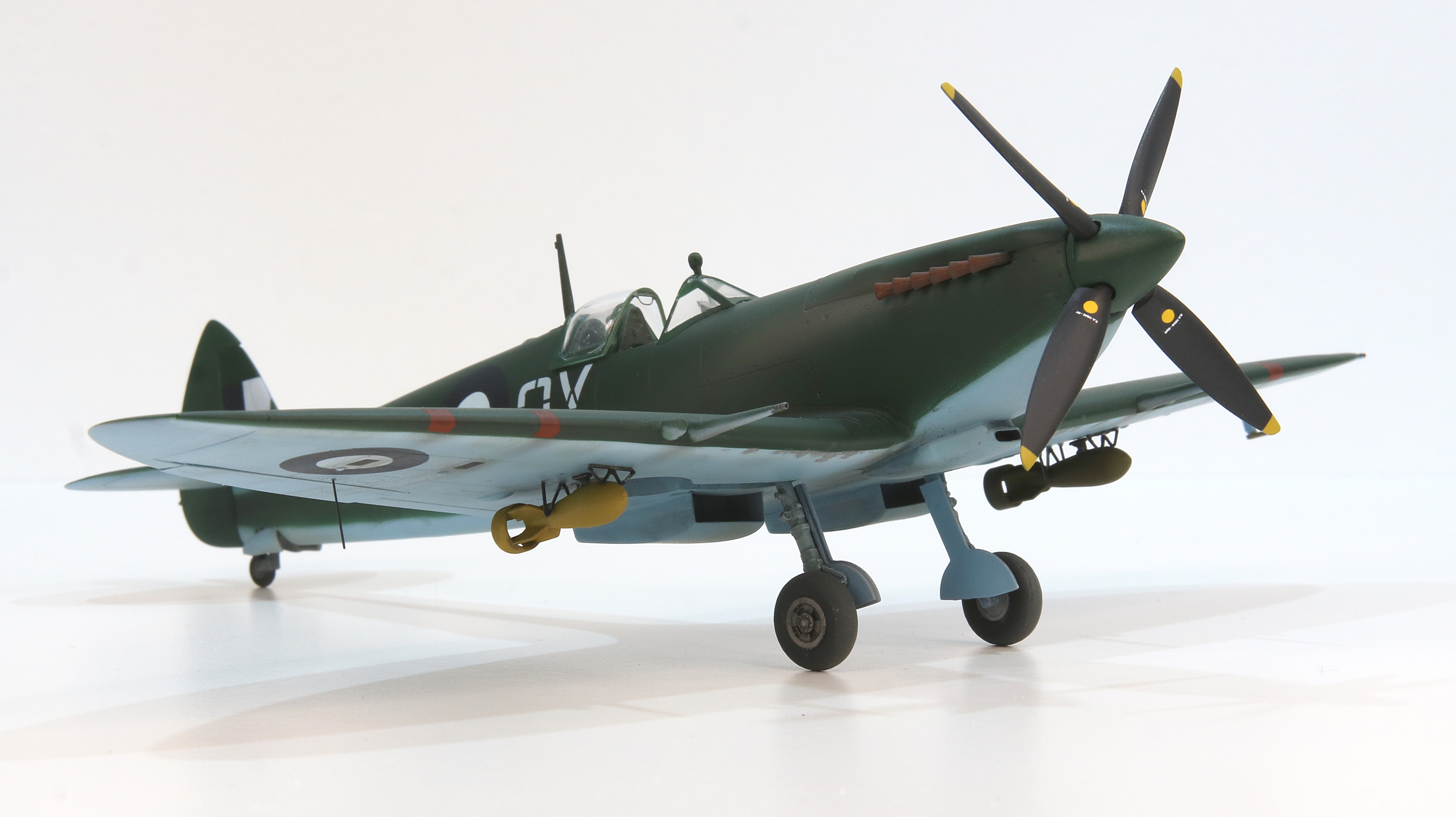




References and Sources
I am deeply indebted to Peter M. on the Britmodeller WIP discussion forum for his help and advice on the markings and configurations of this model. Other online sources were was follows.
- https://aviationmuseumwa.org.au/afcraaf-roll/cullen-norman-james-406070/
- https://www.wikitree.com/wiki/Cullen-2744
- https://en.wikipedia.org/wiki/Clive_Caldwell
If you are interested in following the build as it unfolded, as well as the discussion that led to the choice of markings, the full build diary is logged in the Britmodeller Aircraft WIP Section.
Copyright ©2023
This article, its text, and photos of the model is my original work and is protected by copyright in its entirety, except where noted. All research sources are listed in the References and Sources section above, including photos from official sources. All other images and quoted content were sourced from the internet and are used here under protection of fair-use. Any copyrighted content will be happily removed and/or credited forthwith upon request by its rightful owner.

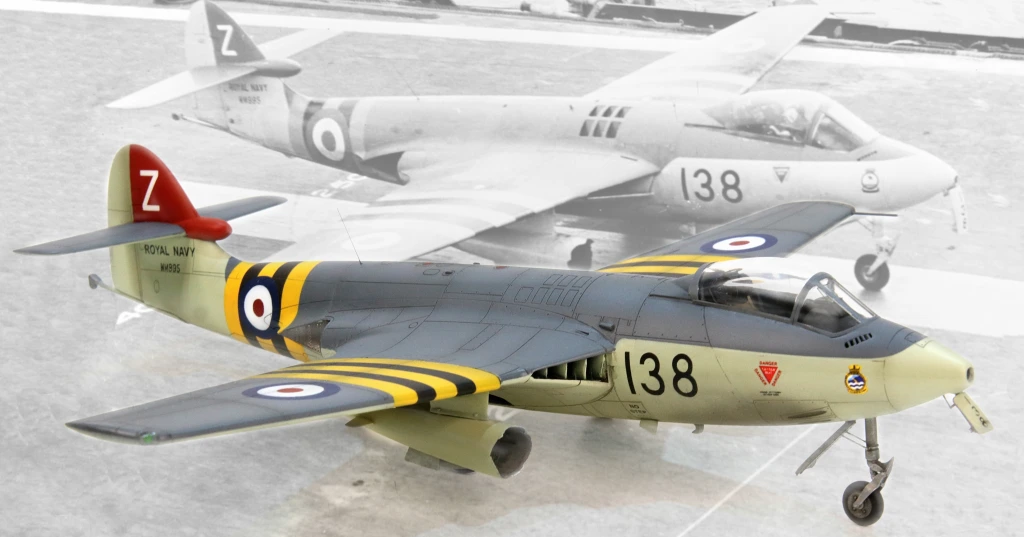



Leave a comment